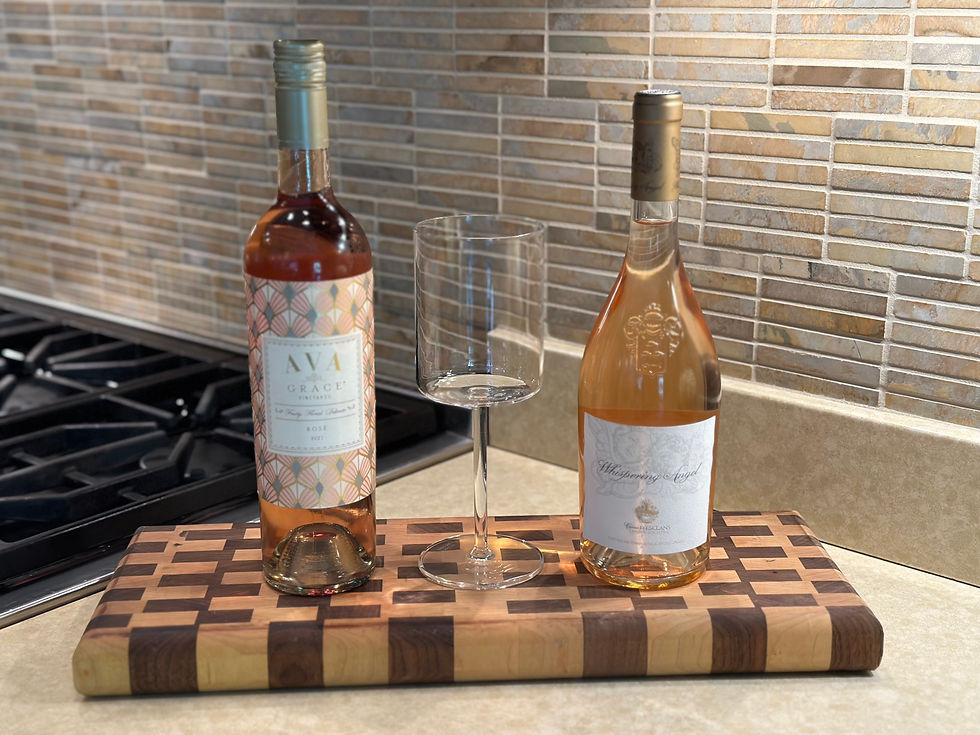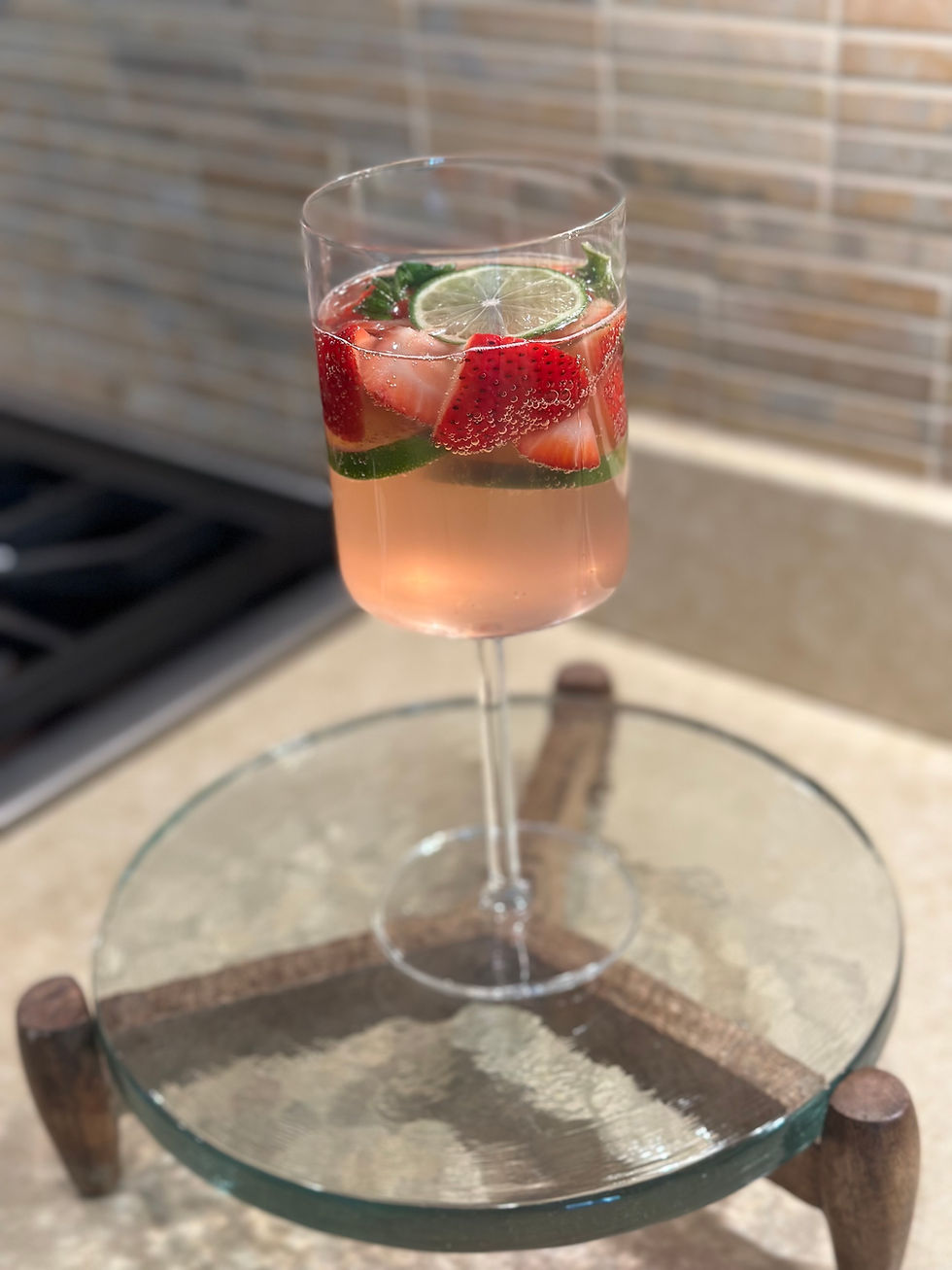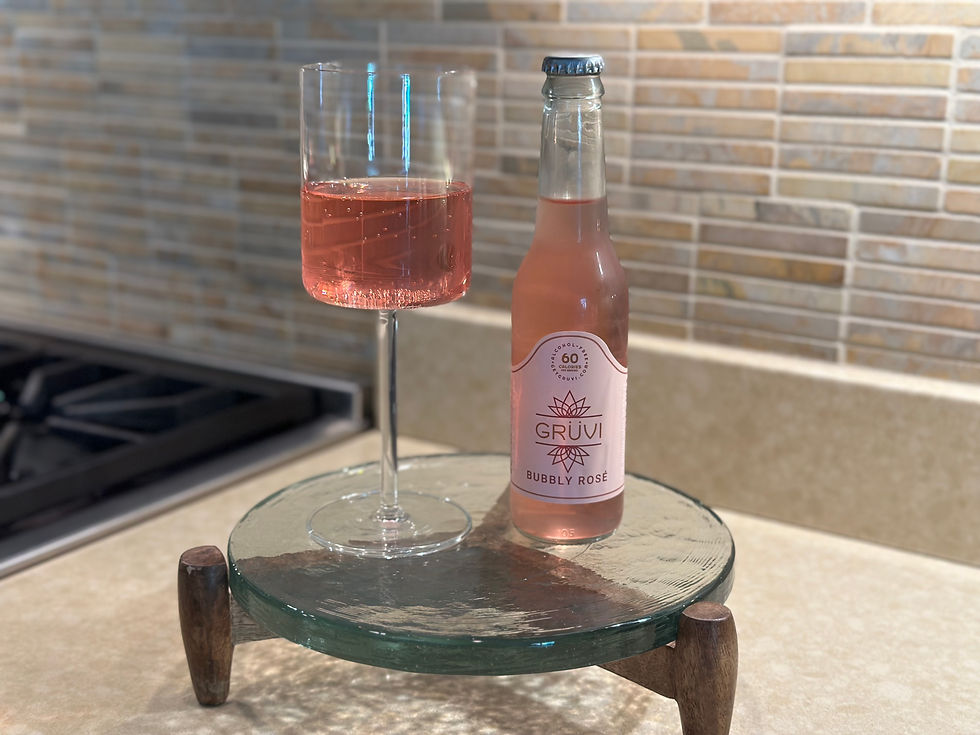Sips & Snacks in June
- Josie Hough
- Jun 1, 2024
- 4 min read

Wine
Rosé

-The history of Rosé-
Serve at 45-55°
Think multiple personalities when it comes to this month's wine. Rosé can be produced using several different red wine grapes, making the tastes and colors widely unique. It also can be still, sparkling, sweet or dry.
Rosé can rock any hat you want it to wear!
The earliest known Rosé dates back to Greece 4000 BC. They were thought to have diluted their red wine to get a paler hue. The Provence Region of Southern France became the Rosé capital in 600 BC after the Romans began to share their Rosé concoction. Rosé Champagne made it's debut in 1784 and in the 1900's more sweet styles became popular with Portuguese producers getting into the game. Today, the blazing popularity of Rosé has resulted in a $3 billion plus industry with the variety and quality improving and changing equally as fast. It's popularity has been credited to the marketing of Provence's Rosé as must drink, seasonal wine that is approachable, fun and versatile.
Rosé Production : Did your favorite red & white just have a baby?
Many believe to produce Rosé you mix white and red wines. Nope, no, notta (well, maybe). Rosé wines are not commonly a mixture of the two, rather most are made the way red wines are made. The four most common ways to produce Rosé are:
The Maceration Method: This is the most commonly used method for production of Rosé. The red grapes are harvested, sorted and de-stemmed and then they all rest or "macerate" in a container for a specific amount of time. This time has a vast range (often 2-72 hours) and when the desired color or "blush"is achieved, the juice is removed and made into a Rosé wine. The Provence Region of France is most famous for this style of production.
The Saignée or "Bled" Method: For this method, the process is the exact same as the above "maceration method",, but the intention of this method is to produce a red wine. During the first few hours of production of the red wine, a specific amount of the juice is removed and placed into a separate container. This juice is made into a Rosé wine, while the original container continues into red production, and with time being much more intense in concentration. This method is used in the Napa Valley and Sonoma California Wine Region and are often found labeled as American Syrah Rosé and Cabernet Sauvignon Rosé.
The Direct Press Method: Also known as Vin Gris (gray wine), makes the most delicate in color of Rosé. The red grape is crushed, pressed and used immediately (similar to a white wine method). A delicate pale pink emerges with no tannins, ensuring a fresh, light wine.
The Blending Method: In the Champagne Region of France, they often use the blending method. It is exactly what you would assume as they blend a specific amount of red wine and white wine to make Rosé wine. In this region it is common to add Pinot Noir (around 5 %) to Chardonnay Champagne to produce a Rosé Champagne (my favorite favorite favorite Champagne - thank you, France.) Be right back...I'm running out to find some Rosé Champagne.
Throwing Shade:
Rosé can be peachy to light plum, pale blush to salmony pink and depending on the red grape and production style, it can range in color, aroma and taste.
I'm sharing with you the vast difference the color of a Rosé can present. These are the two wines this month side by side. In my tasting, I will say the Ava Grace had a bit more floral than the Whispering Angel, but they both were fruity and soft. If you are a Rosé fan you will enjoy both!

Sweet Spot Rosé - Ava Grace Rose 2021 - $8.99
This California Rosé (from the Pinot Noir grape) is fruit forward, delicate and not too sweet. It makes it a great option for the sangria this month. I liked the subtle hints of berries, apricot and citrus with this one and yet it stayed just a touch dry. This would be really good served with a spicy plate of nachos and at under $10, it is a steal!

Special Day Rosé - Whispering Angel 2022 - $24.99
One of the most popular (and loved) Rosé options you'll find is our Special Day selection, Whispering Angel. It hails from the Provence Region of France and is produced using the Grenache grape. It has been referred to "The Standard" for a Provence Rosé. The pale, lovely color is the perfect precursor to the soft, peachy and strawberry forward taste, while staying crisp. Bring this to your next BBQ!

Rosé & Food
With the crisp freshness of your favorite white and the flavors of your favorite red, Rosé makes pairing with food easy.
Salty...yes!
Sweet...yes!
Spicy...yes!
Fuller bodied and deeper colored Rosé is great with grilled protein and veggies.
Want to get spicy? Serve a more delicate or sparkling Rosé to balance the heat.
Both options are great with desserts and especially a citrus or fruit dessert.
Go crazy...Rosé is the choice for your favorite foods.
Food Pairing
If a lovely glass of your favorite Rosé was searching for the perfect mate, here is what should be on that list.
Meats: peppery prime rib, charcuterie
Seafood: crab cakes, salmon
Veggies/Fruits: eggplant, asparagus, grilled vegetables
Spices/Herbs: thyme, rosemary
Cheeses : feta, cheddar, any soft cheese like Brie
Sauces: white sauces, pesto
Dessert: chocolate lava cake, fruit tart
Cocktail
Strawberry Rhubarb Sangria
This sangria is a fun way to use your crop of strawberries and rhubarb!
I've tried this with white wine and Rosé. I prefer Rosé, but they are both incredible!! Use the freshest ingredients you can find!

Mocktail
NA Sparkling Rosé (Grum)
This is a great option if you're wanting a bubbly, non-alcohol option for a Rosé. It is not sweet, so it would be great to use with this month's sangria. The sweet simple syrup in the sangria would add just the right balance.

Please drink responsibly. Don't drink and drive.
This information is for people over the age of 21.
Pregnant women should not drink alcohol.
-As Noted by Me-


_edited.png)



Comments